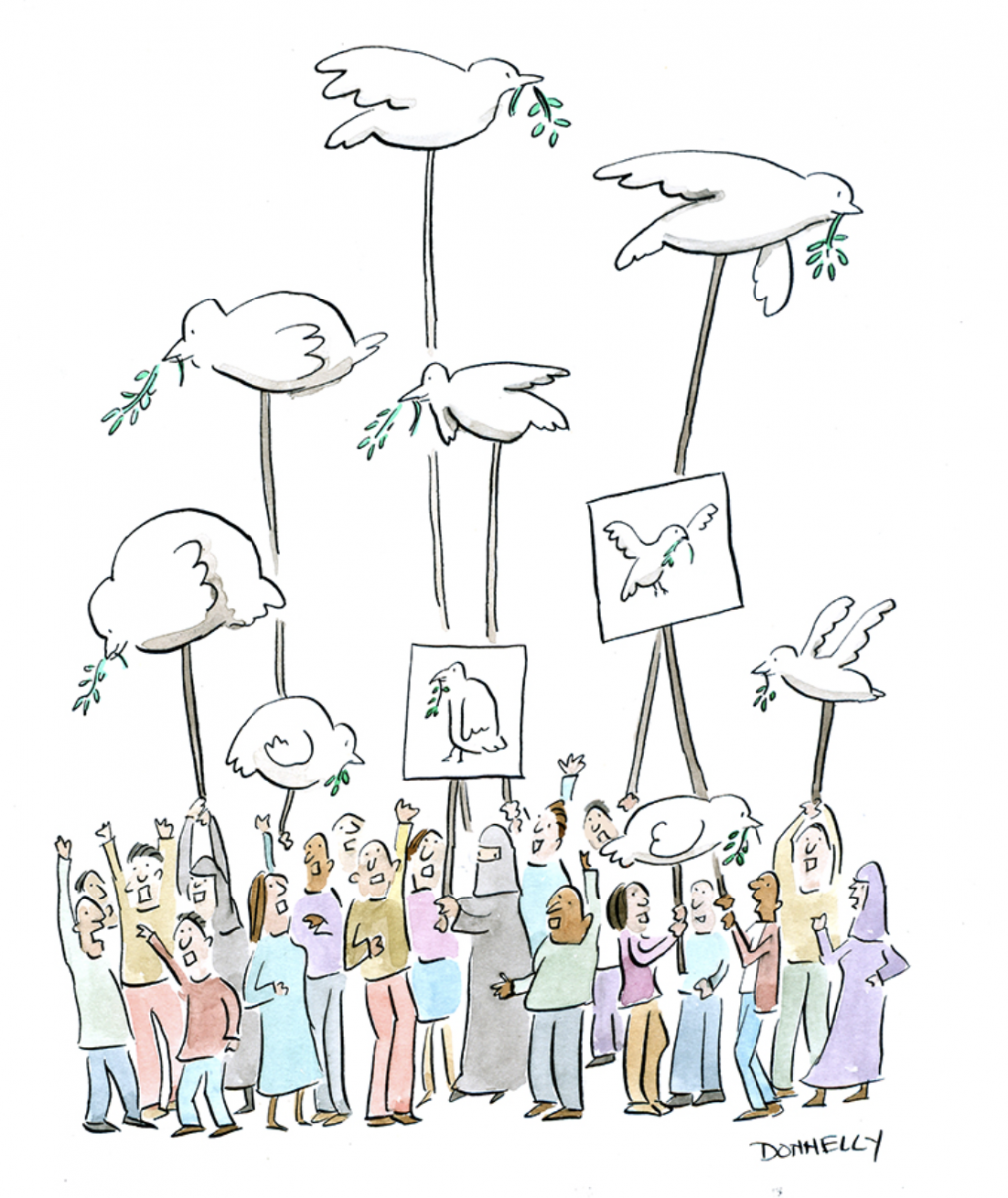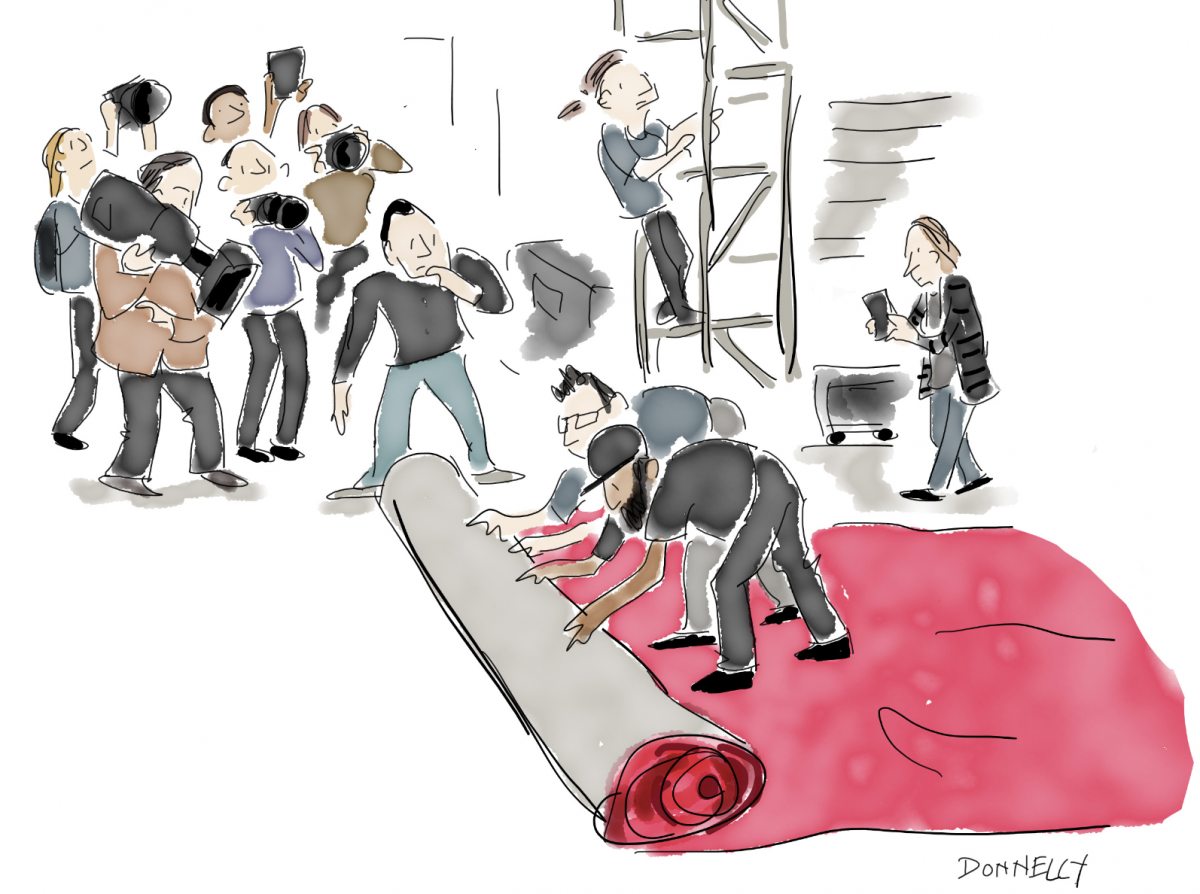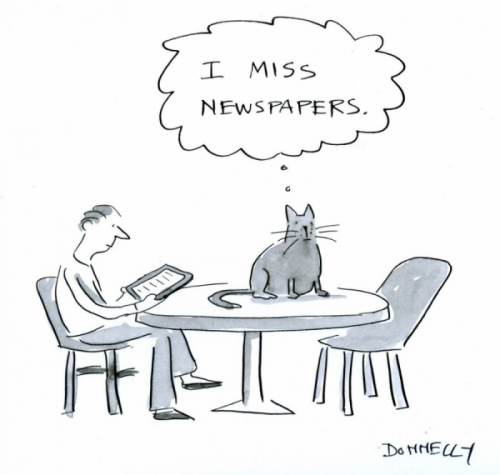Liza Donnelly on the power of cartoons
People always say a picture is worth a thousand words. Liza Donnelly took that sentiment to heart, so when it comes to reporting on politics she takes a different approach: cartoons.
Political reporting has never been an easy job, and current U.S. politics makes the job even more unapproachable. Consumers don’t want to read formal political pieces anymore. They want to be entertained — and what’s more entertaining than a cartoon?
Political cartoons are used to convey the author’s opinion on a certain current event in a way that is humorous, but also persuasive. The cartoon is upfront and in your face about the issue at hand — there is no deceiving the reader into identifying with the author’s opinion. The lack of cunning in political cartoons is what makes them so intriguing.
Liza Donnelly spoke with Storybench about her career and thoughts on the transition to digital storytelling.

For me, drawing came from my youth when I wanted to help this messy world we have. I try to hang onto that because that’s what I really want to do, help connect people and talk about things.
– Liza Donnelly
What were some difficulties you faced when you started cartooning in the late 70s? How has it changed your cartoons?
Liza Donnelly: I grew up during the tumultuous 60s and 70s in this country, and I thought maybe I could use my cartoons to say something or help. Something told me I didn’t have the necessary tools to be a political cartoonist in the Newspaper; perhaps it was because I sensed they were all men, but it didn’t really rise to the surface that it was a problem.
Even though I was a feminist from an early age, I just thought I didn’t have the personality for that … There were no obvious barriers I felt, but I think there were probably cultural barriers that I internalized as a woman. I just kept drawing. I stayed for the New Yorker and worked for other places in the early years.
“I began to meet a few women here and there. It just started snowballing and I decided around those years that I should really start drawing more about women.“
Liza Donnelly
In the 1990s you shifted to drawing political cartoons. What contributed to that change?
LD: Around the turn of the millennium, I started thinking about writing the book “Funny Ladies”. I had always known there were very few of us in the profession, but I thought “well you know I’m drawing and that’s what I want to do.” I didn’t particularly think I could use my drawings for feminist issues in the first third of my career.
I was invited to be on a panel at the American Association of editorial Cartoonists around 1999, and I was not a member of the organization, but they needed women on the panel. There were so few of us and they thought of me. I’m preparing for the panel, and it got me thinking I need to look at the women in the New Yorker and see if there were any in the early years.
In 2005, the Danish cartoon controversy happened and that was the catalyst of the creation of Cartooning for Peace, I was one of the original 12 cartoonists who were asked to speak at the UN in New York (city) about cartooning … It was a great honor.

Can you tell me your thought process when creating cartoons and how you want people to interpret them?
A single-panel cartoon is a little story, it’s like a little set stage and the cartoonist is the stage designer, the scriptwriter, the choreographer, and the casting director. These are people, who are fictional but based on real characters.

How do you think cartoons, as a form of storytelling, will adapt as the world becomes more digital? How will cartoons evolve in the future?
Generally, I am my own media outlet. That’s what is changing in the world with media; so many of us try to connect with our viewers directly
When I started doing New Yorker cartoons, pre-internet, the cartoons were often quick and nuanced. A single-panel cartoon needs to be read quickly and I always thought that would be great for the internet; they’re immediate ideas someone is portraying.
I think a lot of cartoonists are doing a lot of great stuff online. Animation is really popular now; I am trying to do more of it. I have done some over the years; short little animations or gifs.
There are very few outlets for cartoonists … Now with the internet, there is just the new yorker and a handful of other publications that don’t pay very well, but at least they recognize that cartoons are great.
You have to find other ways (to make an income) and the internet doesn’t have a lot of options for paying but there are things like Substack and Medium that are trying to help creators like myself to get some income through our work. It’s an evolving media and I don’t think it will ever go away, which is great, but it’s hard for creatives to make a living doing it.
Have you enjoyed the switch to social media?
I love it. I finally started posting (on Twitter) in 2008. I just really like it. It suits my personality, I guess … I enjoy it. The live drawings started by accident; I was given an iPad and I just started drawing. I use Instagram live to connect with people. It was a natural evolution which I enjoy.
Why is Twitter not as supportive of visual storytellers, as other platforms like Instagram?
It has been slowly shifting. It started out with Twitter as the best place, before Instagram existed … I got many jobs on Twitter from people seeing my work and connecting with me and hiring me. Twitter was great and I don’t know if it still has that power in my work.
The Instagram homepage is like a little portfolio. They can not only see still images, but they can see your videos, your bio, and your links, it’s like a little mini website.
You can post things on the story which are quick, and then there are live stories and reels there are a lot of options there for a visual person that are appealing and helpful.
What do you advise for up-and-coming cartoonists?
We are seeing more and more people come out of college wanting to do this and they’re all on Instagram. It’s kind of a huge field … It’s a good thing, but it makes it harder for somebody to be noticed. That’s the biggest thing, trying to get noticed, trying to get work, and trying to get your name out there.
Draw all the time. Create all the time. That way you not only get better, but you figure out your voice the more you do it. Just put your stuff out there, create an Instagram, and put your work on there. Share your work.
Try to make it look like you aren’t promoting yourself, put some of your own personality in there. It’s hard it’s really hard. I’m sure it’s hard for young people, and it’s hard for me. It’s gotta come from your heart; it has to come from an authentic place.
- Liza Donnelly on the power of cartoons - March 12, 2023





